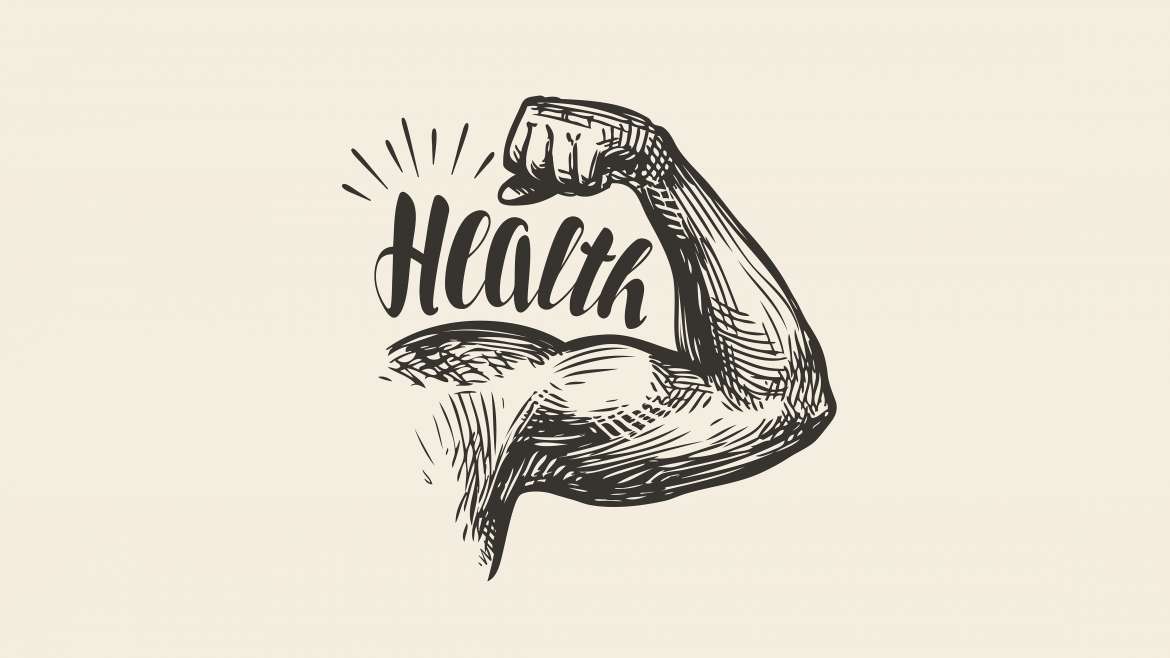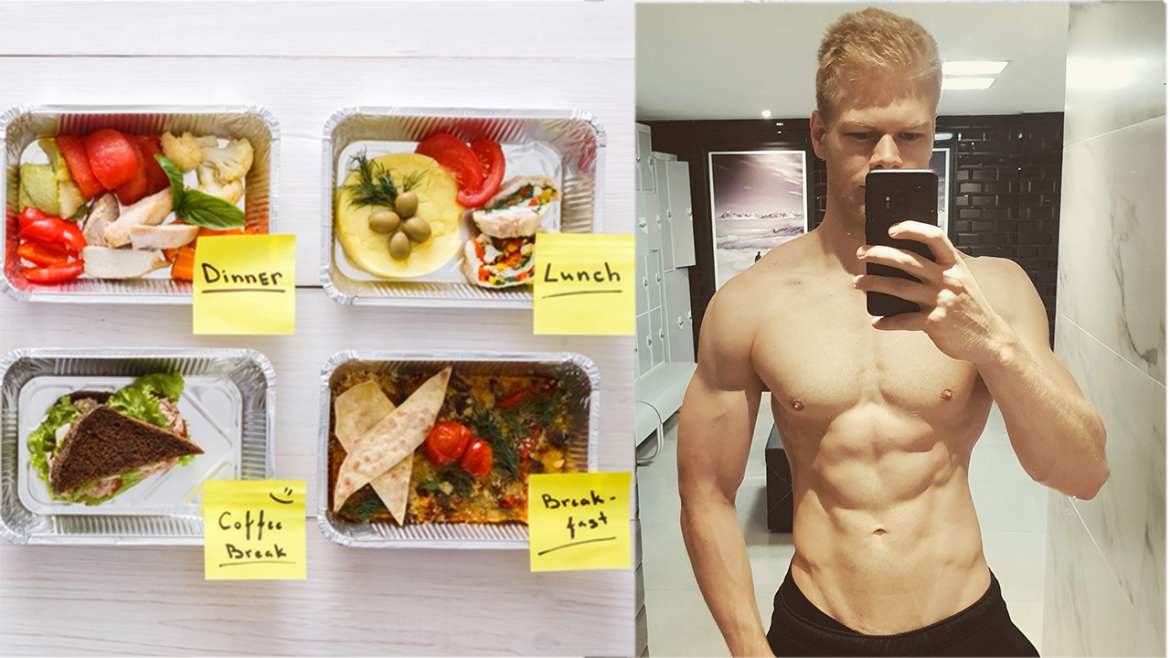The more time you invest in your body, the more likely you are to wonder how big on an effect your gains actually have on health.
That is what I will talk about in this post and at the end, you will have a pretty good understanding of the role of muscle tissue in health & longevity.
Muscle Mass & Health Explained
Most of us start out dieting and working out because of looks. The athletic look is in especially for men, but more and more for women as well.
Six pack abs and broad shoulders definitely make for a nice beach body, and they are also a sign of positive personal qualities like discipline, commitment and drive.
But what about the role of muscle mass in overall health?
In general, muscles play an essential role in your body’s health and wellness, especially when you get older. The most important benefits are metabolic health, obesity prevention and bone strength.
Metabolism Benefits
Let’s start with the effect muscles have on your metabolism. Basically, the more muscles you have, the more calories your body will burn.
By this I don’t mean the calorie burning effect of strength training, which is a nice bonus of course. But being more muscular actually raises your basal metabolic rate, which is the amount calories you burn, when you are at rest.
That’s because unlike fat, which burns 1-2 calorie per day and pound, muscle tissue burns about 6 calories per pound. This isn’t a big difference but you will notice it in the long run.
Insulin Sensitivity Benefits
Another benefit of building muscle is that it generally improves insulin sensitivity. The more insulin sensitive you are, the more effectively your body uses insulin. That means it will require smaller amounts of insulin to lower blood sugar levels.
Someone with “low” or “bad” insulin sensitivity will need more insulin is needed to lower blood sugar levels. Over time this can lead to insulin resistance and diabetes.
Insulin resistance is usually correlated with obesity and inactivity, both of which building muscle can counteract. Muscles are also the most important store of carbohydrates in the body (as glycogen). They do this as an energy reserve which can be utilized every time you exercise or work out.
Having more muscle and larger glycogen stores therefore leads to better overall use of carbohydrates, because more carbohydrate calories will be used for energy and activity instead of fat storage.
Bone Density Benefits
Maintaining or building new muscle tissue is especially important when we get older. As people age, their muscle mass starts to deteriorate. You will not only feel weaker but also look more flabby.
This process can start as early as your 30s, but the majority of people will see it beginning in their 40s and 50s. On average, people lose about a third of their strength between ages 50 and 70, and another third of what’s left every ten years after that.
But the same research also suggests that this muscle breakdown is not due to only natural causes but also to the sedentary lifestyle that we tend to adopt the older we get. Usually, what happens when people get older is that they stop exercising and spend more time sitting still and relaxing.
Of course, there is nothing wrong with a quieter life, but you want to make sure to still exercise regularly. And with exercise I don’t just mean cardio but more importantly resistance training. Because the good news is that this muscle loss can be counteracted and prevented by doing simply resistance training.
Muscle is a use-it-or-lose-it kind of tissue, which means you have to prove to your body that it’s still worth keeping around. But even if you have lost some over the last few years, muscle tissue will rebuild as soon as start exercising it again.
Not only that but resistance training will also delay the onset of age-related muscle atrophy. There are countless cases out there were people in the sixties or seventies are still working out while outlifting people much younger than them.
Resistance training will also benefit your bone density, which is another health indicator that starts to suffer the older we get. Interestingly, not just our muscles respond to overloading by growing stronger, but our bones do the same.
That’s why, weight training with fairly heavy weights has been proven again and again to increase bone density, even in the elderly. Of course, you don’t want to wait until you are in your sixties to start. It’s always best to start sooner than later because maintaining a habit is a lot easier than building a new one.
What Is The Ideal Percentage Of Muscle Mass?
Now that I went into detail about all the benefits of being muscular, you might wonder what the ideal muscle mass percentage is. We all seem to worry about BMIs and body fat percentages, but no one ever talks about muscle mass percentages.
I will now show you a chart with a few percentage values based on your age. These aren’t strict rules that you have to follow but rather general guidelines to help you get a good understanding of what you should aim for.

Keep in mind that these values are for the general public, which has a lot lower muscle mass percentage than your average trainee at the gym. This means unless you are a complete beginner, you probably want to lie on the higher end of that spectrum and fall into the high or very high range.
This shouldn’t be a problem with a few months of following a good workout regimen and a well-structured meal plan. But what if you already fall into to the higher end of that range?
Is There A Benefit To Being Extremely Muscular?
This really depends on how you define extremely muscular. The average person will probably say someone like Ryan Gosling is pretty muscular and has a nice body. Getting such a body is definitely possible for almost anyone and once you get there it also won’t be too difficult to maintain it.
But most fitness folks want a lot more and sometimes strive for bodybuilder-like physiques. In that case, building huge amounts of muscle and having low single digit body fat levels will actually hurt your health.
That’s because completive bodybuilding is a visual sport, not a healthy one. A world-class bodybuilder needs to look good for a particular hour in a particular day of a particular year.
What is done nowadays to achieve this is ridiculous!
Even if you take out the steroids needed to achieve the huge amounts of muscle mass, the general lifestyle doesn’t promote health, either. You have massive fluctuations in body weight, unhealthy mineral balances, critically low levels of body fat and a lot of stress because of overly precise meal timing and super strict diets.
Don’t get me wrong, all this takes a lot of discipline and I don’t want to downplay the sacrifices and achievements these guys make. It’s just an example to illustrate that the health benefits of muscle mass are not endless and you can have too much of a good thing.
That said, most average people don’t have enough muscle mass and as I explained in this post, building some more will definitely improve their health long term.



